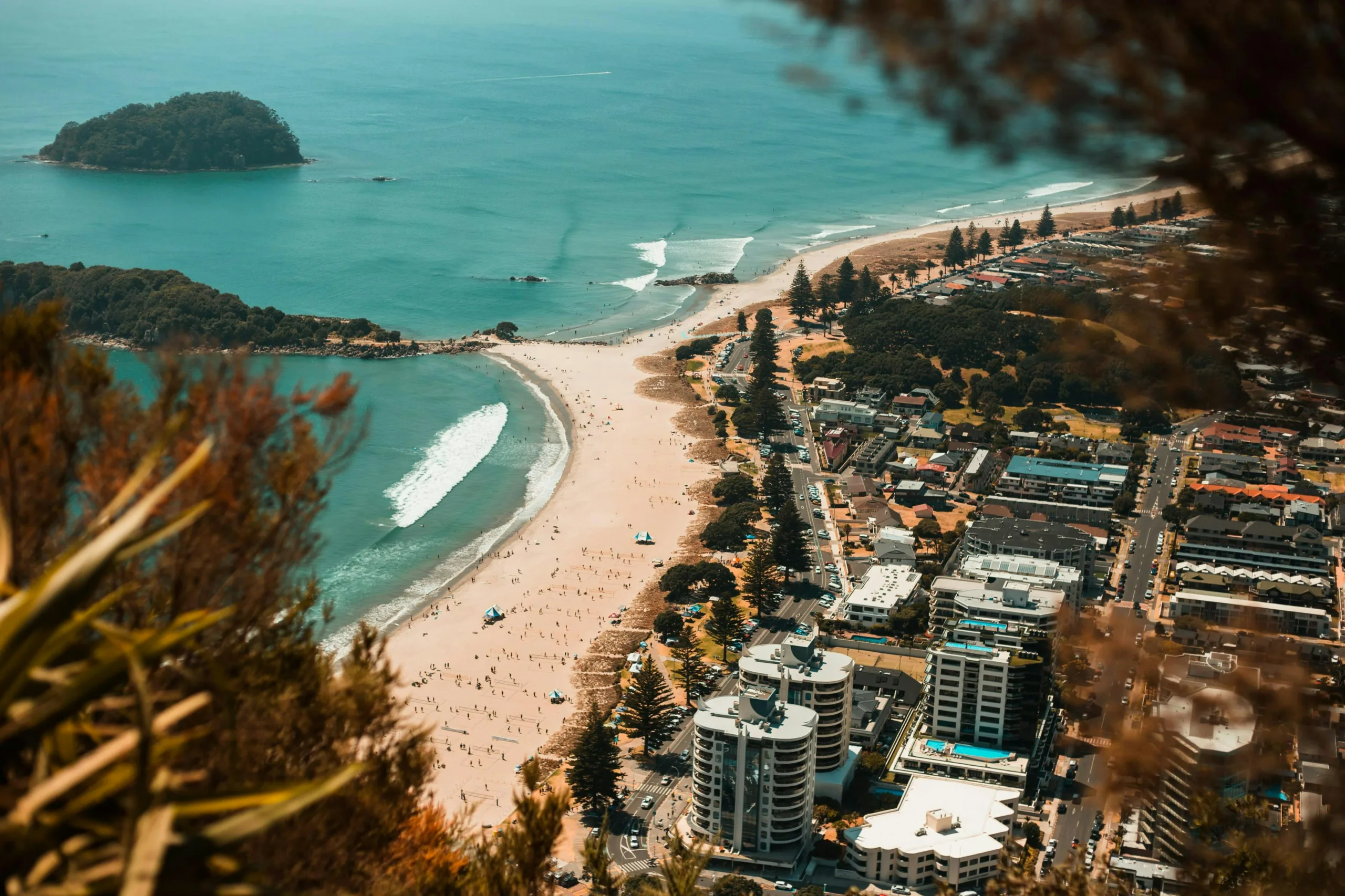Mount Maunganui, the seaside gem of New Zealand, boasts a wardrobe of weather that’s as varied as my Grandma’s knitting patterns—eclectic, surprising, and strangely fitting. Each month seems to have its own personality, much like my peculiar Aunt Edna’s mood swings at family gatherings. From the sun-kissed peaks of summer to the moody drizzle of winter, the climate in this coastal paradise has something for everyone; whether you’re a sun worshipper or a puddle-splashing enthusiast, you’ll find your slice of atmospheric bliss.
As I traipse through the calendar, I’m greeted by the balmy breezes of January, nudging the thermometers to a congenial warmth that says ‘grab your shorts, but don’t forget the sunscreen’. Then there’s February, strutting in with the confidence of a peacock, boasting the highest average temperatures, almost as if it’s daring March to one-up it. Fast-forward a few months, and you’ll find that winter here isn’t just about snuggling up with a good book and a better cup of tea—it’s a cool, drizzly affair that might even call for the odd adventurous splash in a rain puddle.
No matter the month, Mount Maunganui serves up a climate as delightful and unpredictable as a picnic with Mary Poppins. The weather dances from the summer sizzle to the winter drizzle and every nuanced shuffle in between. So pack a suitcase that’s as adaptable as a chameleon at a disco because whether it’s a day for surfers or for staying under the covers, this place has a forecast for your every fancy.
Month-By-Month Weather Breakdown
Ah, Mount Maunganui, where the wardrobe changes as often as the weather! Let’s take a stroll through the year, shall we?
Summer Sizzle: January & February
January treats me with offers of beach-worthy days, as the mercury dances between 20°C and 26°C on average. February continues the party, showing off as the warmest month with highs of 22.2°C and cozy lows at night of 15.4°C. I’m soaking up the sun most days, thanks to historically generous sunshine levels.
Autumn Aura: March & April
As March rolls in, I reluctantly pack away my flip-flops with average temperatures taking a slight dip, ranging between 13.9°C and 20.6°C. April is when I start looking for my lost umbrella; the historical weather data suggests a little more rain but still, the air holds a touch of summer warmth.
Mild & Moody May & June
Come May, I’m in a light jacket, appreciating the moderate weather with lower highs and mild lows. June hands me the occasional chilly greeting, though temperatures remain rather friendly. I’m keeping my eye on the sky—rain isn’t a stranger!
Cool Character: July & August
No need for ice cubes in my drink during July and August—I’ve got nature’s refrigerator! These months tend to be cooler; July often takes the title of the coldest month, with a temperature variance that has me sometimes reaching for the hot cocoa.
Sprightly Spring: September & October
I’ve been spotted conversing with flowers in September and October, thanking them for the spring beauty and the warmer breezes. The temperatures are climbing back up, disrobing me of my winter layers. Rainfall? Sure, it happens, but it’s just nature’s way of saying, “Let’s freshen up for summer.”
Curtain Call: November & December
By November, sunscreen is my new best friend. December has me planning outdoor festivities, with historically comfortable weather in December. With a decent chance of sunny days, it’s a splendid end to the year, as Mount Maunganui thinks twice before letting the rain spoil the holiday cheer.
Extremes, Averages, & Anomalies
So, I’ve spent quite a few days and nights in Mount Maunganui, and let me tell you, the weather can be as unpredictable as my Aunt Gertrude’s mood swings! But fear not, I’ve compiled some nifty little weather tidbits that’ll make you the go-to person for all things meteorological in this coastal paradise.
Record High: Think you can handle the heat? The warmest month typically turns up in February, where you might see the mercury hitting a scorching 22.2°C. Bring out the sunnies and slap on that SPF!
Record Low: If you’re more of a ‘cool character’, July might be your pal, with thermometer readings that can drop to a chilly 6.4°C. Brrr, grab a hot cocoa and your favorite sweater.
Highs & Lows: My oh my, the weather’s a ride, with summer high jinks averaging between 20°C to 26°C, while winter whispers to us with lows averaging around 6°C to 14°C. Mount Maunganui’s temperature patterns keep us on our toes!
Most Humid Month in Mount Maunganui: Prepare to glisten (because I never sweat) around August, where humidity plays its sticky game and your hair might just poof out to twice its size!
Longest Days: The summer solstice in December gifts us up to 14 hours of daylight. It’s like Mother Nature’s own extended happy hour!
Windiest: Hold onto your hats in September when the winds can whip up a frenzy, making it feel as if you could Mary Poppins your way down the street.
Now, let’s not forget historical weather data; Mother Nature’s been keeping records better than I could ever manage with my shoddy filing system. You’ll often find this seaside town flirting with precipitation around 1369 mm annually, reminding us why those rain jackets are always in fashion here.
Remember, whether you’re chasing the sun or shivering by the sea, Mount Maunganui’s weather is as varied as the playlist at that beachside barbecue last summer!
When To Visit: Seasonal Travel Tips
Choosing when to hop over to Mount Maunganui can be as crucial as remembering to put sunscreen on your nose. It’s not just about basking in the sunshine; wind patterns and rain can play a big role in your holiday satisfaction!
Best Time for Sunseekers
Oh, I just adore that feeling of the sun kissing my skin, don’t you? For the most splendid sunbathing escapades, I’d aim for January or February when the skies are bluest. These months boast the sunniest days with temperatures hovering between a delightful 20°C and 26°C. Longest days? They’re in the bag around the summer solstice.
- Sunshine Average: Around 168 hours in May
- Temperature: Typically between 20°C and 26°C in peak summer months
- Sunrise & Sunset: Earliest sunrise in December, latest sunset in January
Wind Aficionados & Kite-Flyers’ Picks
Now, if I want my hair artistically tousled by the wind or my kite soaring higher than my ambitions, it’s essential to time my visit. May is when I’d pull out my windbreaker, as the SSW winds gust with gusto, making it a rather breezy affair.
- Windy Season: Consistently from October to May
- Windiest Month: Has a tendency to be May
- Average Windspeed: A peppy 14 km/h in May
Raindrop Dodgers’ Guide
Seeking to sidestep the droplets? I’d recommend aiming for the driest month in Mount Maunganui, which is generally February. On the flip side, if unintentional splish-splash is not your groove, give the wetter months a wide berth – I’m looking at you, July!
- Rainfall: Expect about 120 mm in May
- Average Precipitation: Peaks in July
- Driest Month: Typically February, when umbrellas can take a break

